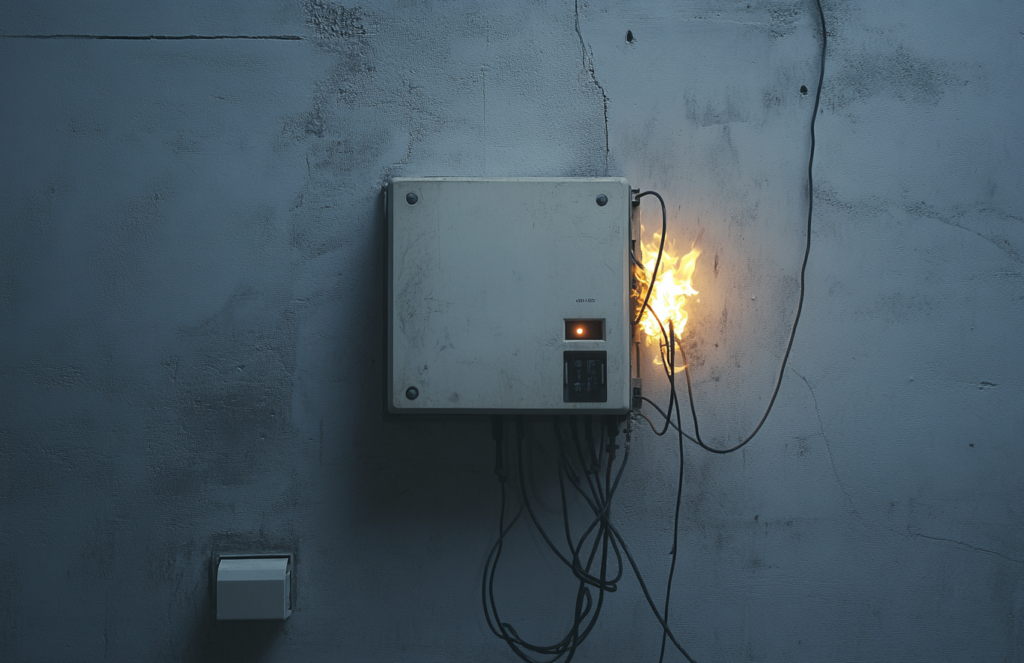
Electricity powers our homes, workplaces, and lifestyles, but it also comes with serious risks when mishandled. Every year, thousands of electrical accidents occur due to neglect, lack of knowledge, or failure to follow basic safety rules. Whether you’re a homeowner doing DIY work or a professional electrician, understanding electrical safety is non-negotiable.
In this guide, we’ll explore the key safety tips you should always follow when working with electricity. Protecting yourself and those around you starts with being informed and vigilant.
Why Electrical Safety Is Important?
Electricity is invisible but extremely dangerous. It can cause burns, fires, shocks, electrocution, or even death. Improper handling can damage appliances, ruin wiring systems, and put your entire property at risk.
Following safety precautions:
- Reduces the risk of electric shock
- Prevents electrical fires
- Ensures compliance with Australian Standards
- Protects tools, equipment, and property
- Creates a safer work or home environment
1. Turn Off the Power Supply
Before you touch any electrical component, turn off the power at the main switchboard. If you’re working on a specific circuit, isolate that circuit at the breaker.
Use a voltage tester to confirm that the power is off before starting any kind of electrical work. Never assume supply is off and wires are dead.
2. Use Proper Safety Gear
Wearing the right personal protective equipment (PPE) significantly reduces your risk. Depending on the job, safety gear may include:
- Insulated gloves
- Rubber-soled shoes
- Safety glasses
- Non-conductive tools
- Fire-retardant clothing
Never work barefoot or with wet hands around electrical installations.
3. Keep Water Away
Water and electricity are a deadly combination. Avoid working in damp or wet areas, and never operate electrical tools or appliances with wet hands.
If you must work in a potentially damp environment, use ground fault circuit interrupters (GFCIs) and moisture-resistant tools.
4. Use Insulated Tools
Only use tools specifically rated for electrical work. These include screwdrivers, pliers, and cutters with insulated handles that are designed to prevent current flow through your body in case of contact with live wires.
Look for tools that are marked with a CAT rating and are certified for the voltage level you’re working with.

5. Understand the Wiring System
Before starting any work, get a clear understanding of the electrical layout. Know which wires are live, neutral, and earth. In Australia:
- Brown = Active (Live)
- Blue = Neutral
- Green/Yellow = Earth
Label wires during removal so you can reconnect them properly. If you’re unsure, always contact a licensed electrician.
6. Avoid Overloading Circuits
Overloading a circuit can lead to overheating, tripping breakers, or causing fires. Avoid plugging too many devices into one outlet or extension cord.
Make sure circuit ratings match the load they’re meant to carry. If you’re adding new equipment or circuits, consult with a professional.
7. Be Cautious with Extension Leads
Extension cords are temporary solutions and should be used with care:
- Don’t run cords under carpets or rugs
- Don’t overload them
- Use heavy-duty cords rated for outdoor use if used outside
- Inspect cords for damage before each use
A frayed or damaged cord can easily cause a short circuit or fire.
8. Install Safety Devices
In Australian homes, several safety devices help reduce the risk of electrical hazards:
- Circuit Breakers – Automatically cut off power during overloads or short circuits
- Residual Current Devices (RCDs) – Detect imbalance in current and shut off power to prevent electrocution
- Surge Protectors – Protect electronics from voltage spikes
Ensure these are installed and functioning properly in your switchboard.
9. Don’t Work Alone
Whenever possible, have someone nearby while working with electricity. In case of an emergency, they can shut off the power and call for help.
This is especially important for jobs that involve switchboards, roof cavities, or crawl spaces where you may be out of sight.
10. Know Your Limits – Call a Professional
DIY electrical work can be tempting, but in Australia, certain jobs are legally restricted to licensed electricians. These include:
- Wiring new circuits
- Replacing switchboards
- Installing power points or lighting fixtures
If you’re unsure about the complexity or legality of a task, call a qualified electrician like Blue Ridge Electrical. Your safety and compliance with regulations are worth it.
Bonus Tips for Electrical Safety at Home
Even if you’re not actively working on an electrical system, you should still practice everyday electrical safety:
- Teach kids not to touch outlets or cords
- Replace damaged plugs or cords immediately
- Don’t ignore flickering lights or tripping breakers
- Schedule regular electrical inspections for older homes
- Keep electrical appliances clean and dry

What to Do in Case of Electric Shock
If someone suffers an electric shock:
- Do not touch them directly.
- Shut off the power source immediately (if safe to do so).
- Use a non-conductive object like a broom handle to separate them from the current.
- Call 000 (emergency services) immediately.
- Provide first aid or CPR if you’re trained.
Stay Safe with Help from Blue Ridge Electrical
Electrical safety isn’t just about knowledge—it’s about making smart, cautious decisions. At Blue Ridge Electrical, our qualified electricians follow the highest safety standards to protect homes, businesses, and people throughout the region.
Whether you need an inspection, installation, or repair, we’re here to provide expert service and peace of mind.
Need electrical help? Contact Blue Ridge Electrical today and let the professionals handle it safely.
